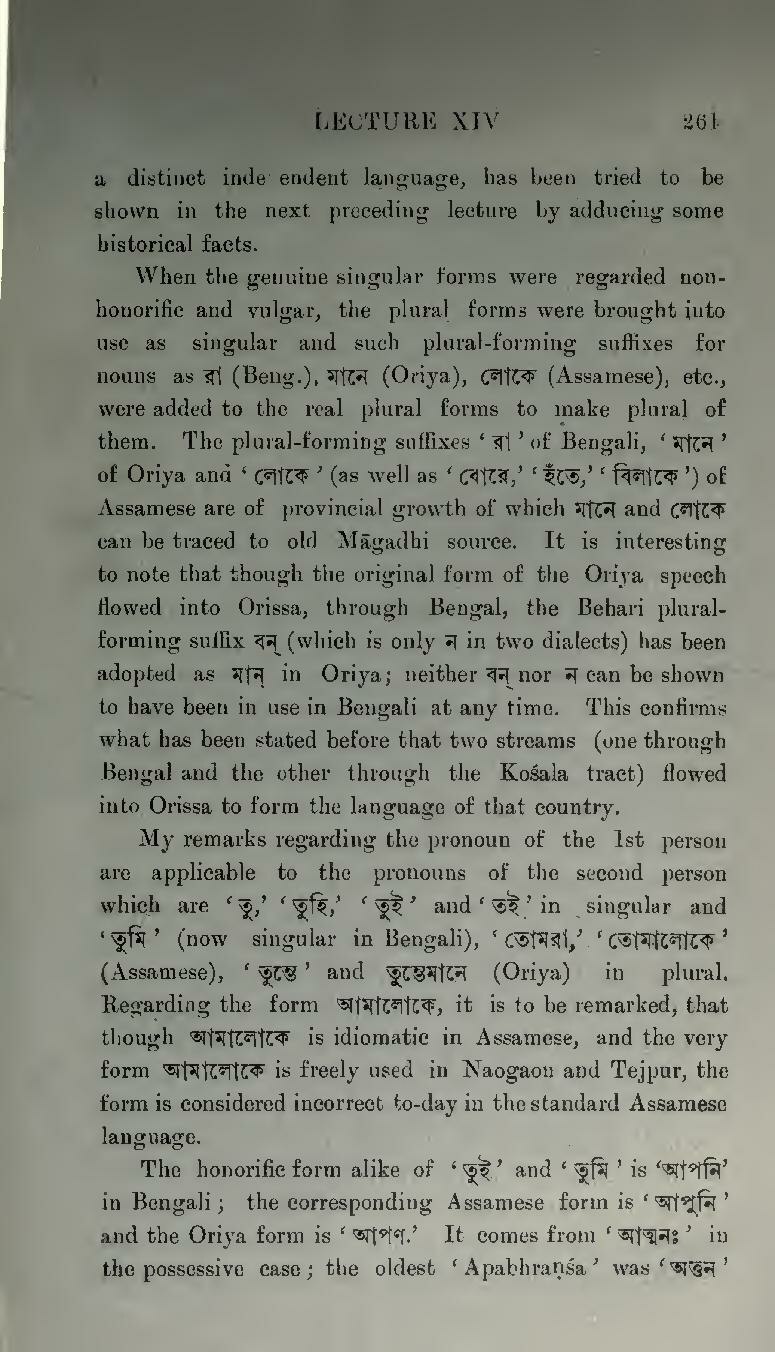a distinct independent language, has been tried to be shown in the next preceding lecture by adducing some historical facts.
When the genuine singular forms were regarded non-honorific and vulgar, the plural forms were brought into use as singular and such plural-forming suffixes for nouns as রা (Beng.), মানে (Oriya), লোকে (Assamese) etc., were added to the real plural forms to make plural of them. The plural-forming suffixes 'রা' of Bengali, 'মানে' of Oriya and 'লোকে' (as well as 'বোরে,' 'হঁতে,' 'বিলাকে') of Assamese are of provincial growth of which মানে and লোকে can be traced to old Māgadhi source. It is interesting to note that though the original form of the Oriya speech flowed into Orissa, through Bengal, the Behari plural-forming suffix বন্ (which is only ন in two dialects) has been adopted as মান্ in Oriya; neither বন্ nor ন can be shown to have been in use in Bengali at any time. This confirms what has been stated before that two streams (one through Bengal and the other through the Kośala tract) flowed into Orissa to form the language of that country.
My remarks regarding the pronoun of the 1st person are applicable to the pronouns of the second person which are 'তু,' 'তুহি,' 'তুই' and 'তই' in singular and 'তুমি' (now singular in Bengali), 'তোমরা,' 'তোমালোকে' (Assamese), 'তুম্ভে' and তুম্ভেমানে (Oriya) in plural. Regarding the form আমালোকে, it is to be remarked, that though আমালোকে is idiomatic in Assamese, and the very form আমালোকে is freely used in Naogaon and Tejpur, the form is considered incorrect to-day in the standard Assamese language.
The honorific form alike of 'তুই' and 'তুমি' is 'আপনি' in Bengali; the corresponding Assamese form is 'আপুনি' and the Oriya form is 'আপণ.' It comes from 'আত্মনঃ' in the possessive case; the oldest 'Apabhraṇśa' was 'অত্তন'
